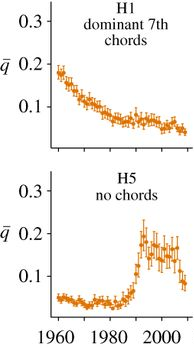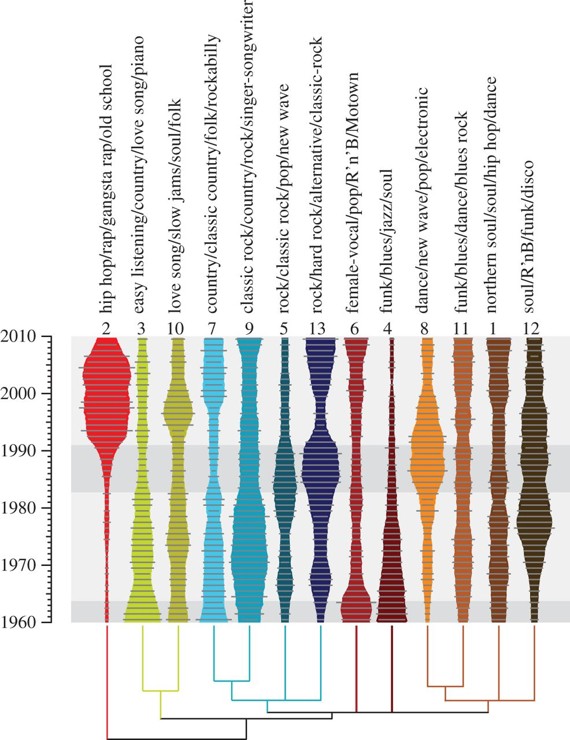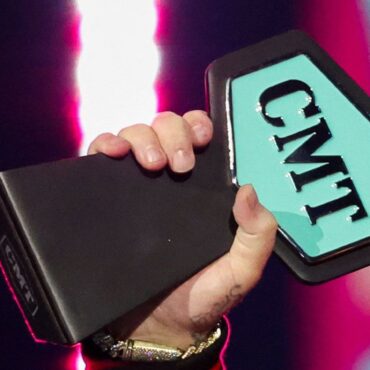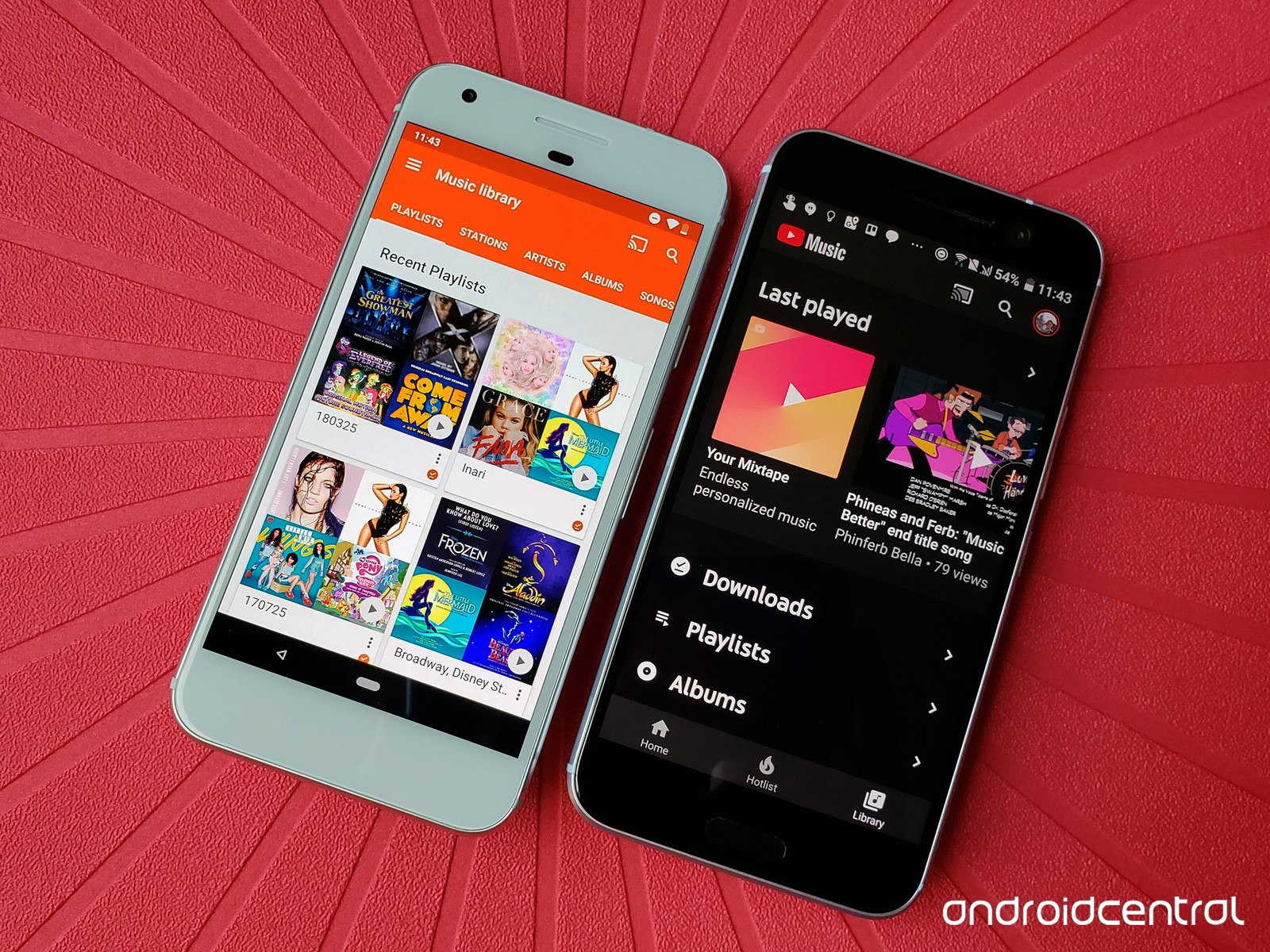chevron_left
-
play_arrow
NGradio So good... like you
Historical, musical, and quantitative evidence shows that the rise of rap is the most important thing that has ever happened to the genre.
On June 22, 1991, Billboard announced a new album had surpassed Out of Time, by R.E.M., to become the most popular in the country. It was Niggaz4life, by N.W.A., which had debuted the previous week at number 2 and sold nearly a million copies in its first seven days. Billboard had published an album chart for 45 years, but this marked a historic week: It was the first time that a rap group claimed the top spot on the Billboard 200.
For several years, music historians have considered this, the consecration of rap on mainstream music charts, the watershed moment in modern music, marking the death of hard rock and the dawn of a period where hip-hop has merged with several genres, including country, dance, and even alt-rock, to become the modern sound of pop.
Now the theory gets some quantitative cred. New analysis from researchers in the United Kingdom, who studied the chord structure and sounds of 17,000 songs in last half-century, determined that 1991 marked the most significant revolution in the history of modern pop music. The rise of rap and hip-hop, they authors wrote, marked “the single most important event that has shaped the musical structural of the American charts.”
“Hip-hop,” the music behind the lyrics, which are “rapped,” is a form of sonic bricolage with roots in “toasting,” a style of making music by speaking over records. (For simplicity, I’ll use the term “rap” interchangeably with “hip-hop” throughout this article.)
Why did rap’s emergence seem so sudden on the charts? And why did this all happen in 1991?
After all, “Rapper’s Delight,” by Sugar Hill Gang, the first radio hit that contemporaries considered hip-hop, was released 12 years prior, in 1979. Rick Rubin founded Def Jam Records in 1982. Run-D.M.C. released King of Rock and performed in Live Aid in 1985, and the Beastie Boys came out with Licensed to Illin late 1986. The first music show dedicated to rap, the perfectly-named “Yo! MTV Raps,” debuted in 1989, and some historians look back on the program as the baptism of hip-hop as a mainstream genre. “Hip-hop did not just appear out of the blue [in 1991],” said Matthias Mauch, a co-author of the paper. “We see a rising trend towards less chord-orientated sound a few years earlier.”
But for chart-watchers and Top 40 radio listeners, rap clung to the fringes until the early 1990s. It might have gotten its critical boost from an unlikely ally: Billboard’s statistical method. (I promise this is an interesting story about methodology, perhaps the only one I know.)
In the middle of the 20th century, Billboard started publishing the Hot 100, which lists the most popular songs in the country, and the Billboard 200, which does the same for albums. For decades, these lists were put together using methods that would offend even the most careless statistician, as I explained in “The Shazam Effect.” Billboard had few ways to truly measure what albums were being sold in stores or played on the radio. Instead, they relied on an honor system, by asking record stores and DJs to self-report the most popular musicians of the moment. Both parties had reasons to lie, and not just because the labels would pressure radio stations and record stores to play the hand-picked hits.
Imagine, for example, that you’re a record-store owner in the 1980s. You’ve just sold out of AC/DC, but you’re still stocked with Bruce Springsteen albums. The honest thing to do would be to tell Billboard that AC/DC is the band of the moment. But the smart thing to do would be to tell Billboard that Bruce Springsteen is selling like crazy. That way, the Boss’s album flies up the chart, which encourages fans of popular music to come back to the store and empty the shelves still holding his records.
So, for many years, Billboard wasn’t a perfect mirror of American tastes. It was warped by label preferences and record-store inventories. It often over-counted songs that labels preferred (like rock) and under-counted genres they were indifferent toward (like country and rap).
But in 1991, this changed. First, Nielsen ended the record-store charade by releasing SoundScan, which used point-of-sales data from cash registers in stores. Finally, Nielsen had timely information on which albums were really selling. Around the same time, Billboard switched from trusting radio stations’ self-reports to monitoring airplay through a third party. The Hot 100 chart changed from a political document to a statistical register, honestly tracking the songs Americans were really buying and listening to.
Within a few weeks, N.W.A. replaced R.E.M. on the charts. The swapping of acronyms—out with soft rock, in with hip-hop—was a harbinger. In the early 1990s, the “hip-hop/rap” genre exploded to become, by far, the most common genre of music on the Billboard Hot 100 charts for two decades (see the graphs below). These methodology changes “helped new artists, particularly in hip-hop,” said Silvio Pietroluongo, director of charts at Billboard.

When British researchers studied 30-second segments of 17,000 songs in the Billboard Hot 100 between 1960 and 2010, they looked at features like chord-changes and “timbral” sounds, like drums and voices. They used this analysis to determine how certain styles and genres go into and out of fashion. For example, they discovered that the frequency of dominant-seventh chords common in jazz and the bluesdeclined by about 75% between 1960 and 2009, while the frequency of hit songs without prominent chord structures, as in much of rap, tripled between the late 1980s and the mid-1990s. (See the graph to the right.)But their most dramatic discovery fits with our story: In the early 1990s, rap and hip-hop emerged as, not only a mainstream sound, but the defining genre on the Billboard charts. As you can see in this, their rather awesome graph of the ebb and flow of music styles, no other mega-genre has been so dominant for so long.
The History of Pop Music: 1960-2010

One week after Billboard updated its chart methodology in 1991, the first rap album hit number one. For the next quarter-century, the British scientists found, the emergence of rap and hip-hop has proven to be more durable to the sound of pop music than even the dawn of classic rock. More than the British Invasion or the brief tyranny of 1980s drum-machines, Matthias Mauch said, 1991 was the most significant year in the history of pop music.
Source: theatlantic.com
Written by: New Generation Radio
Rate it
ΔΗΜΟΦΙΛΗ ΑΡΘΡΑ
COPYRIGHT 2020. NGRADIO





















Post comments (0)